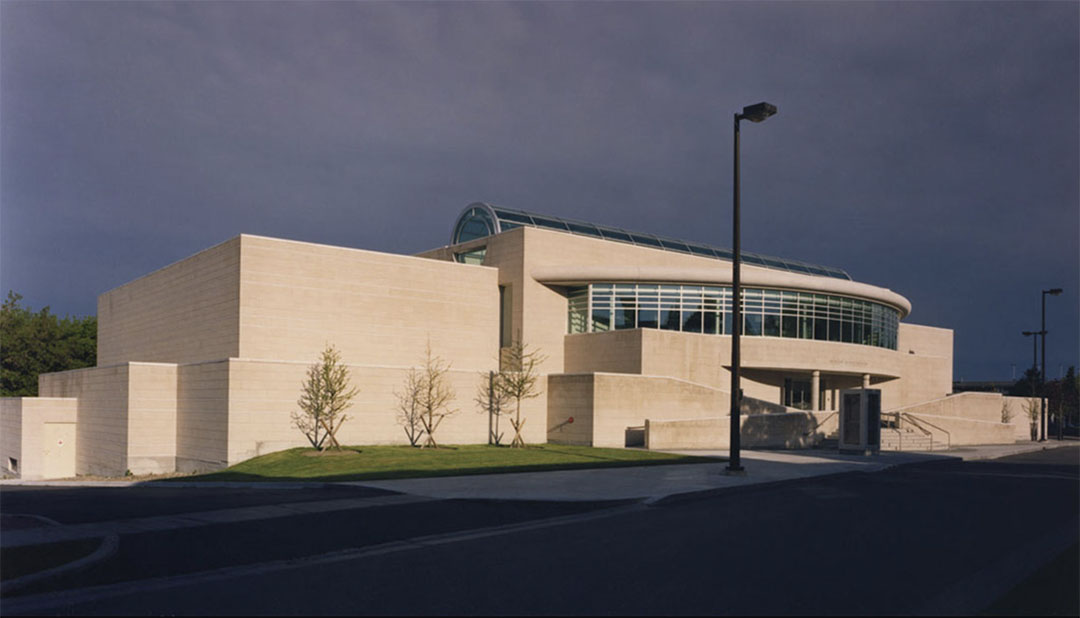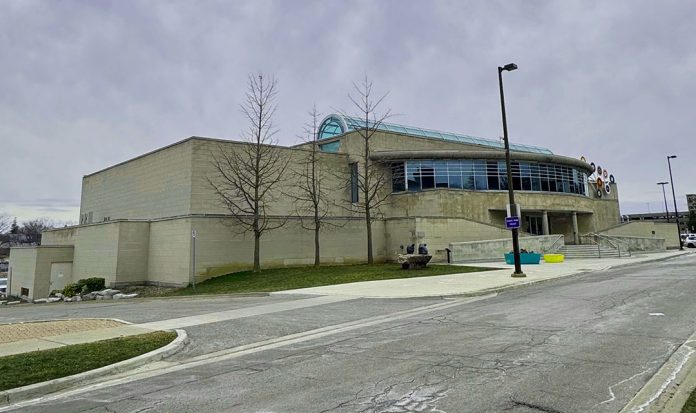Since the founding of the Robert McLaughlin Gallery, community has played a vital role in its development and growth as an organization.
The Robert McLaughlin Gallery, also known as the RMG, is a public art gallery located in Oshawa, and the largest public art gallery in Durham Region.
The RMG was founded in 1967 after Oshawa designer William Caldwell hosted the first exhibition above a storefront in downtown Oshawa. The exhibition was held under the name Art Gallery of Oshawa, which was the first official name of the RMG.
At the time there was a demand for an art gallery in Oshawa as the city was growing and there were several people pushing for a gallery. Lauren Gould, CEO of the RMG, says that the McLaughlin’s and their influence in the art scene were a big part of the reason for the push in Oshawa getting a gallery.
The McLaughlin family is most known for Robert McLaughlin, the grandfather of Ewart McLaughlin, who was the founder of The McLaughlin Carriage Company. His son, Robert Samuel McLaughlin, incorporated the McLaughlin Motor Car Company in 1907. In 1918, it was purchased by General Motors and incorporated as General Motors of Canada.
The painter’s Isabel McLaughlin and Alexandra Luke, both members of the McLaughlin family, were among the most influential local artists of their time. Isabel, cousin of Ewart McLaughlin, and Luke, also known as Margaret McLaughlin for many of her early works, was married to Ewart.
“At that first exhibition that happened in that space above the storefront, Ewart McLaughlin and Alexandra Luke were there and announced, ‘We’re going to fund building an art gallery,’” says Gould.
So with the generous financial support of Ewart McLaughlin and Alexandra Luke, along with Luke’s donation of her personal collection of 37 art works, the gallery was built in 1969. The architect who designed the building was Hugh Allward of Allward & Gouinlock.
The new name of the gallery was announced at the opening ceremony. “It was called the Robert McLaughlin Gallery as a way to honour the history rather than to choose a name from the McLaughlins that were around and making it happen at the time,” says Gould.
This announcement caused some mixed reactions because many people were surprised that the gallery wasn’t named after Alexandra Luke. Luke’s donation of her personal collection to the RMG was the foundation of the gallery’s collection.
Interim senior curator at the RMG, Sonya Jones, says Luke’s donation meant that the gallery was going to be a collecting organization.
“Within that gift was a lot of works by Painters Eleven, so the first Ontario Abstract Collective, as well as other important abstract artists that we’re really modern and contemporary at that time,” says Jones. “That really set the foundation for us in terms of our interest, and in supporting abstraction and the history of abstraction in Canada.”
Painters Eleven were the first abstract collective in Ontario and played a significant role in popularizing abstract art throughout Canada. Their first exhibition was also Toronto’s first major commercial abstract art exhibit. The RMG now has the largest collection of Painters Eleven artworks internationally.
So, with the support of the McLaughlin family, Oshawa got its first public art gallery.
The original building was a lot more modernist, as it was a square stone structure with hardly any windows. The building had 6,000 feet of exhibition space, offices and vault storage.
It wasn’t until 1987 that the RMG got its first expansion, which cost $5.4 million. The buildings expansion was designed by the famous Canadian architect and urban planner Arthur Erickson.

Erickson is one of Canada’s best-known architects, some of his most significant works include the Museum of Anthropology at the University of British Columbia, Roy Thomson Hall in Toronto, the National Gallery of Canada in Ottawa, and many more.
The gallery’s expansion helped the growth and public recognition of the RMG.
“I think Isabel’s connection with Arthur Erickson helped to provide some prestige to the architect who was coming to design the space,” says Gould.
The expansion added 36,000 square feet to the gallery, which was built around the existing stone structure. Erickson incorporated a lot more natural light into the space with skylights and 35-foot high ceilings.
The renovations completely transformed the atmosphere and experience of the gallery, specifically because of the addition of the skylit corridor that immerses visitors as soon as they enter the building.
The preservation of the original stone facade adds an element of tranquillity to the gallery space with its beige-white colour. The exterior of the gallery was also revitalized from its original brutalist structure, while still maintaining some styles of brutalism.
Many block-like angular geometric shapes of concrete were added to the front of the building. The staircase is aligned with the entrance of the building and on each side of the staircase there are two ramps enclosed partly by angled blocks of concrete.
The exterior of the gallery consists of mostly square and rectangular blocks of concrete, with the glazed bowed front windows serving as the centrepiece of the building. That space also used to have a 55-seat restaurant within the gallery.
Before this gallery even existed, though, this land was the traditional territory of the Michi Saagiig Nishnaabeg since 1700.
The RMG is in the treaty lands of the Mississaugas of Scugog Island First Nation, and before 1700 it was stewarded by different communities of the Haudenosaunee and Wendat confederacies. The land is covered under the Williams Treaties and the Dish with One Spoon Wampum.
The RMG recognizes they are in treaty land, and they make a continuous effort to work toward addressing structural inequities and honouring Indigenous voices in the gallery.
“Like many institutions internationally, our collection is built on our colonial founding,” says Gould. “So, it doesn’t reflect the communities that we are actually trying to serve, so that’s a big part of what we’re trying to do now.”
Gould says the gallery is currently focused on diversifying the collection and collecting from equity deserving artists. One way they are doing this is through two exhibitions on display currently.
One of the exhibitions is called World-Builder Shapeshifters, which was curated by Erin Szikora. “It focuses on supporting emerging Indigenous artists and all of these artists are exploring how to build new, joyful, positive worlds for Indigenous communities,” says Gould.
The second exhibition is called Kenatentas by local Indigenous artist Raechel Wastesicoot. The exhibition consists of twelve beaded artworks that were each inspired by or are an interpretation of a Painters Eleven work.
Local artists have always been crucial to the gallery’s development. Gould says that it is important to the RMG to showcase community work and that they stay rooted in Oshawa and Durham Region.
“We really believe that art can be a vehicle and a tool to connect community and to also create care within that community,” says Gould.
She says that over the next five to 10 years, the gallery’s goal is to make it feel like a place where people feel they can belong, without any barriers to access.
“We do want it to feel more like a centre for a community to gather either together or on their own to contribute to their well-being,” says Gould.
As the gallery looks toward the future, their focus remains on the people and community.
“Our hope is really just to bring more people in so they can understand a bit more about how art can contribute positively to their lives.”




